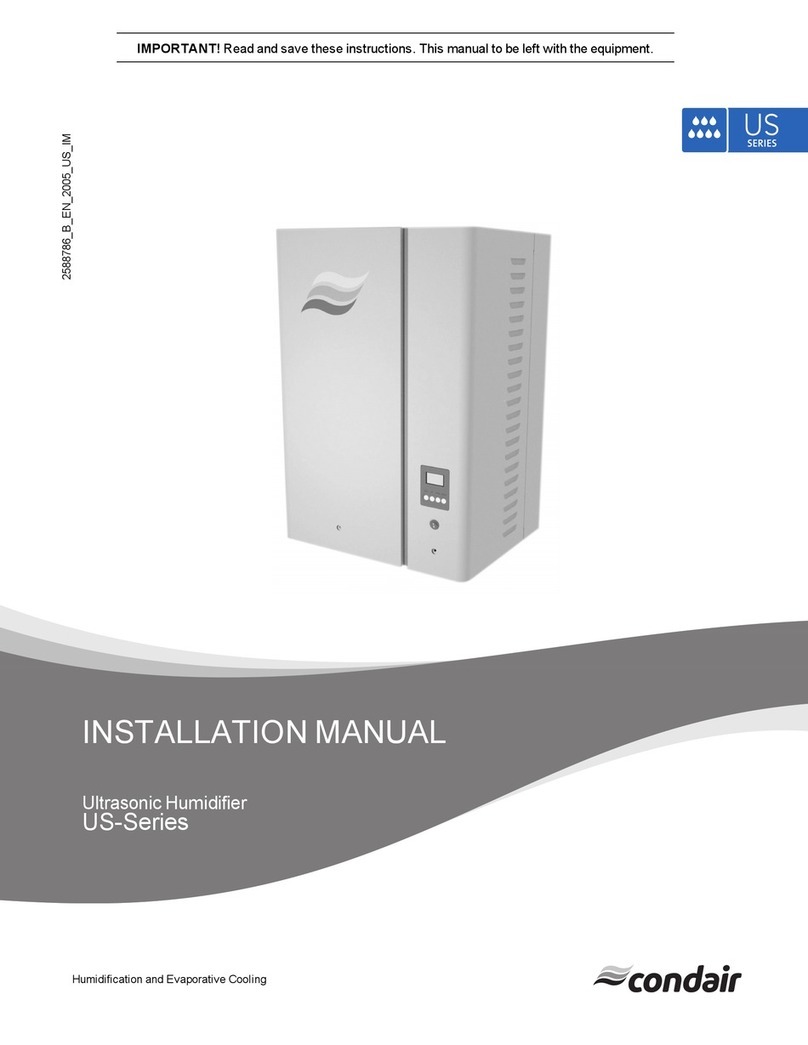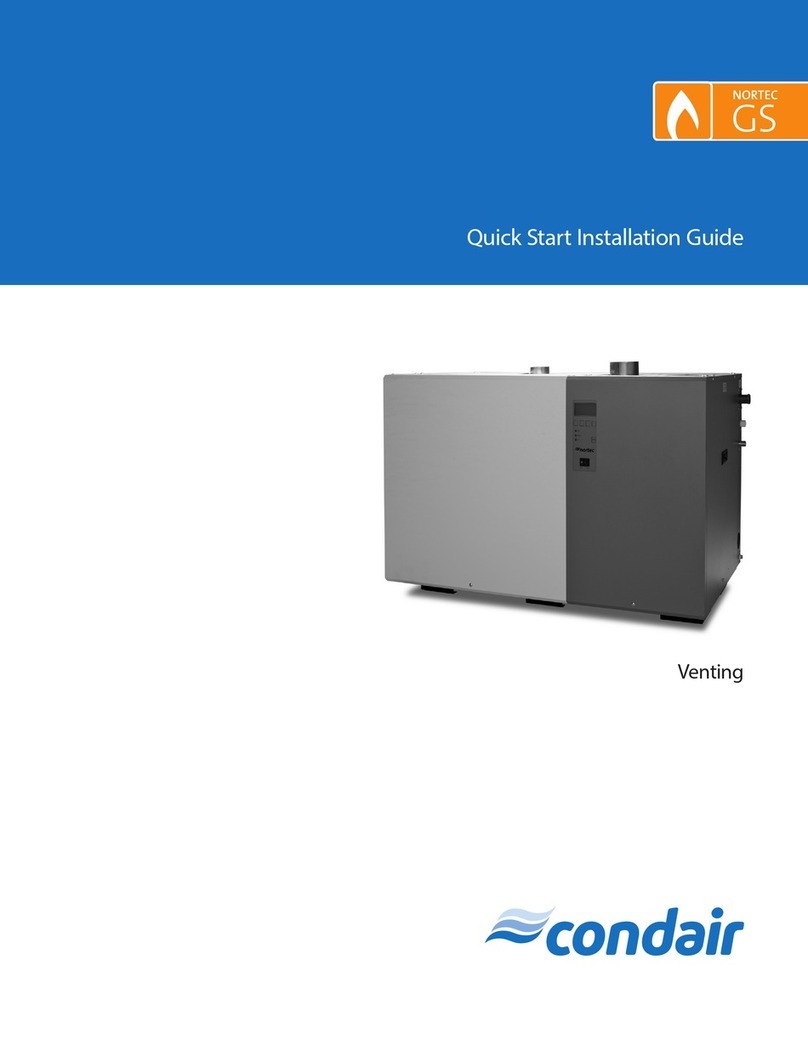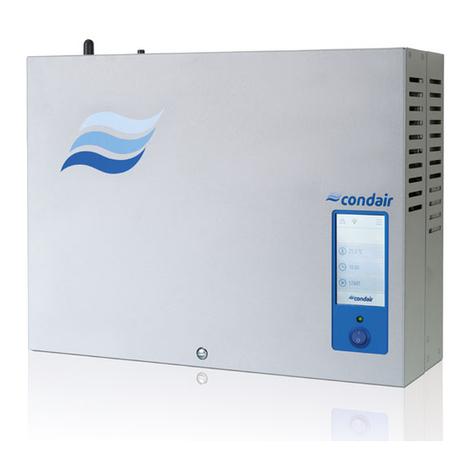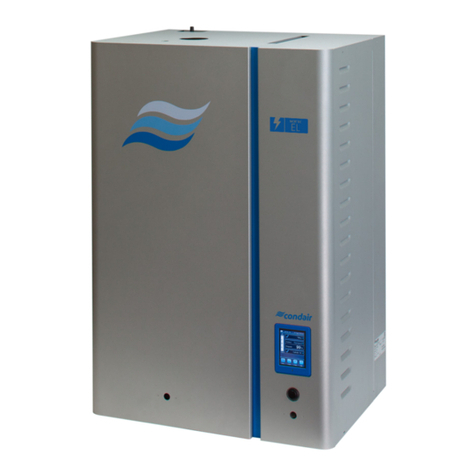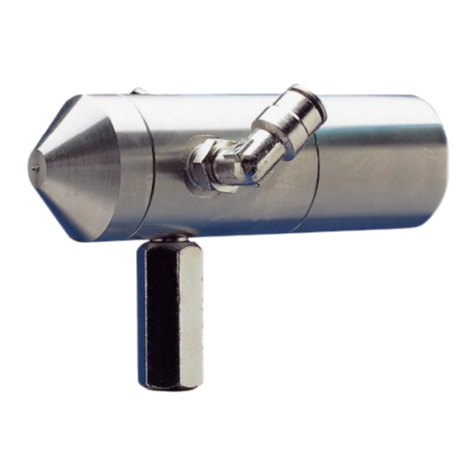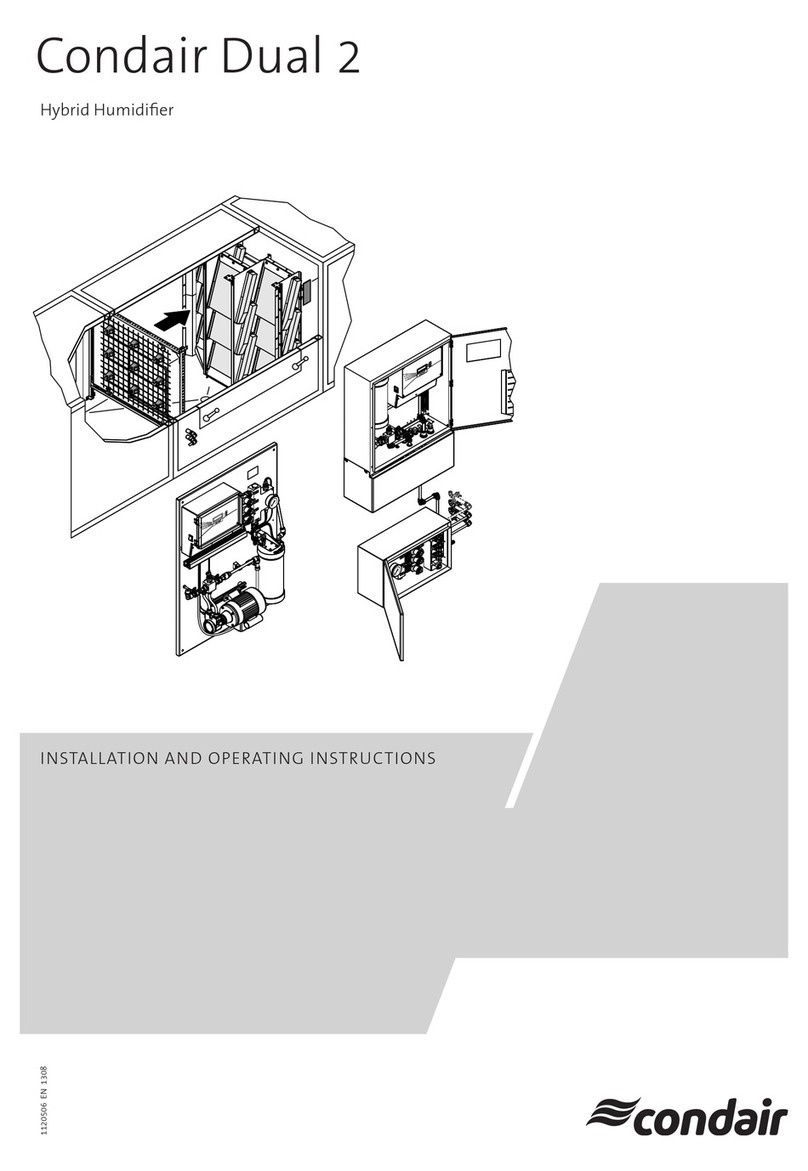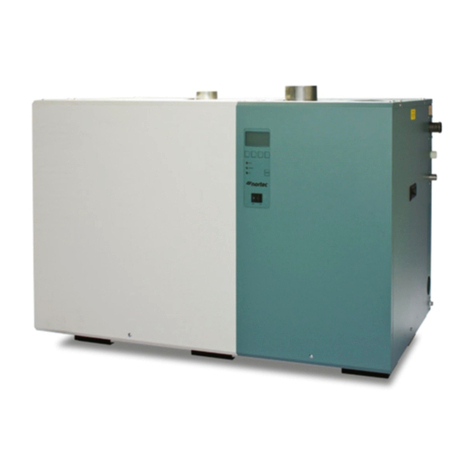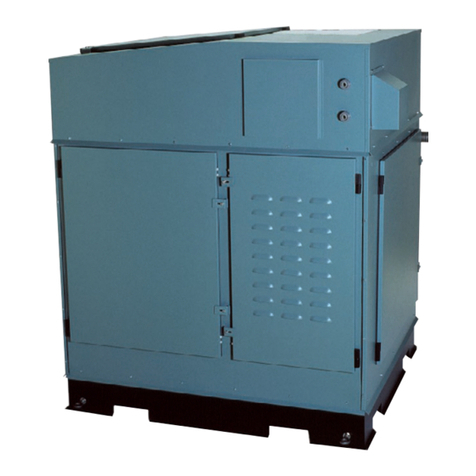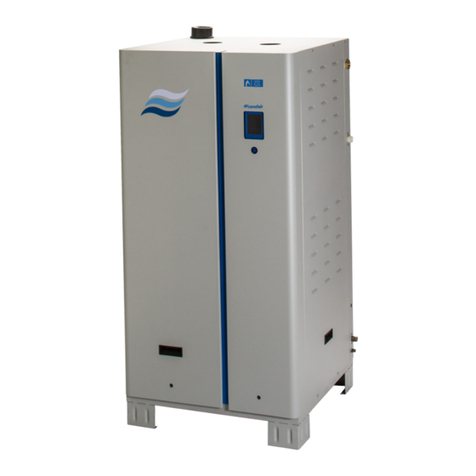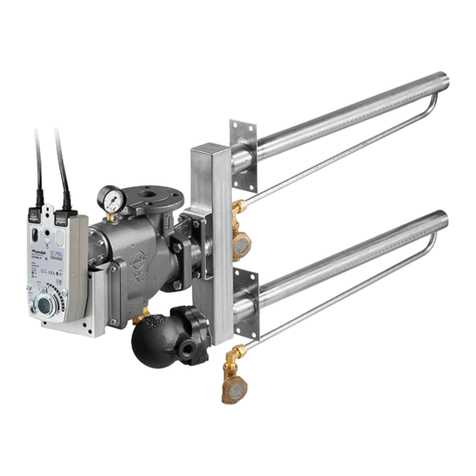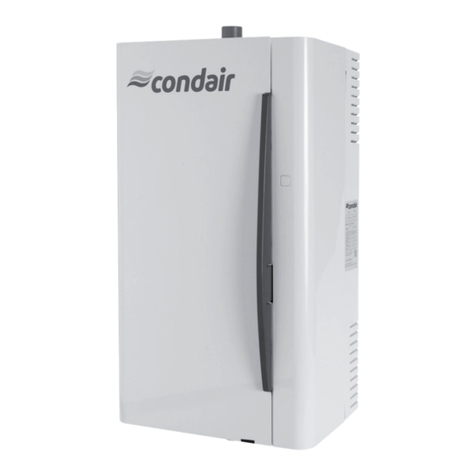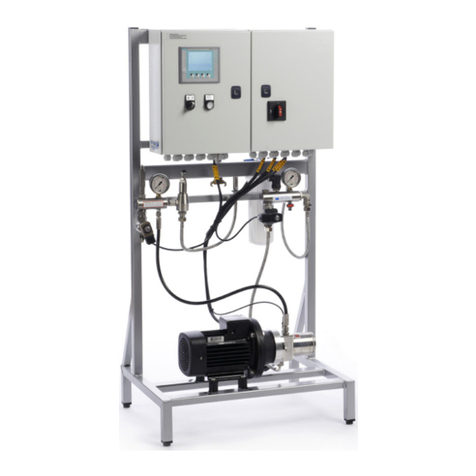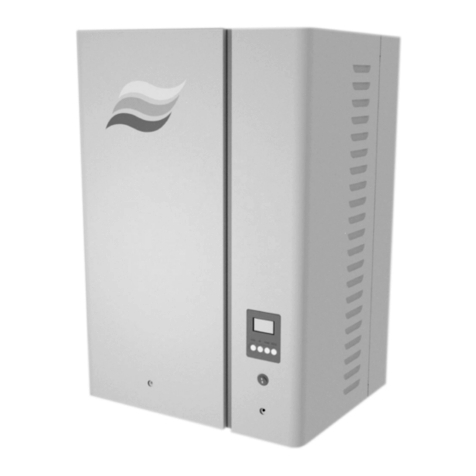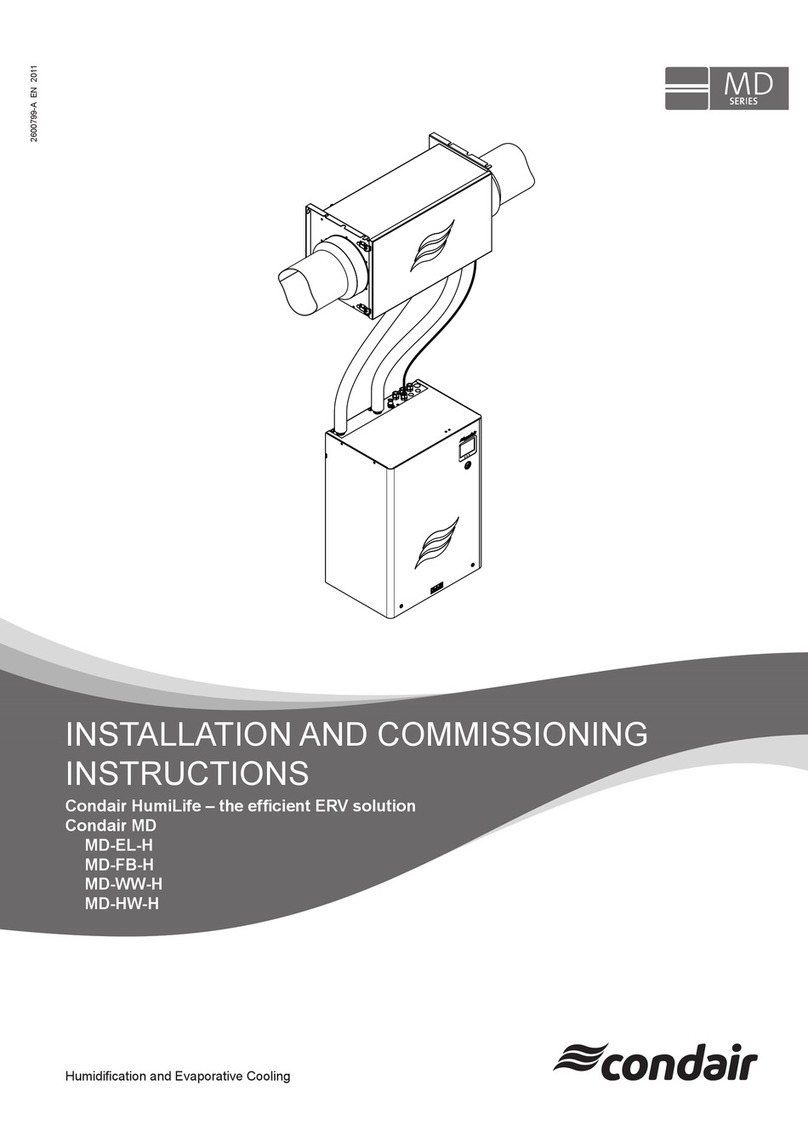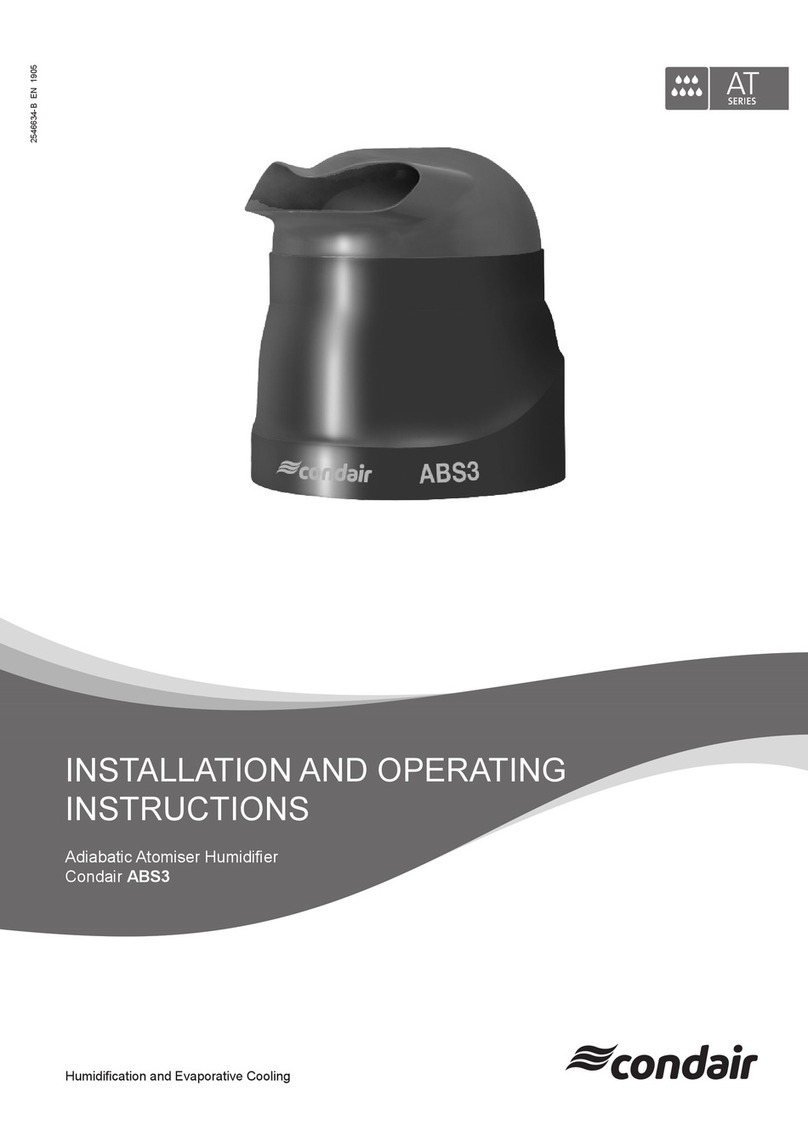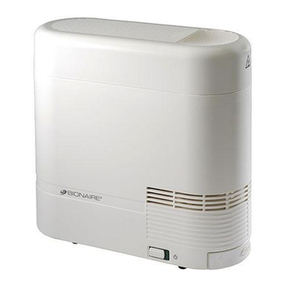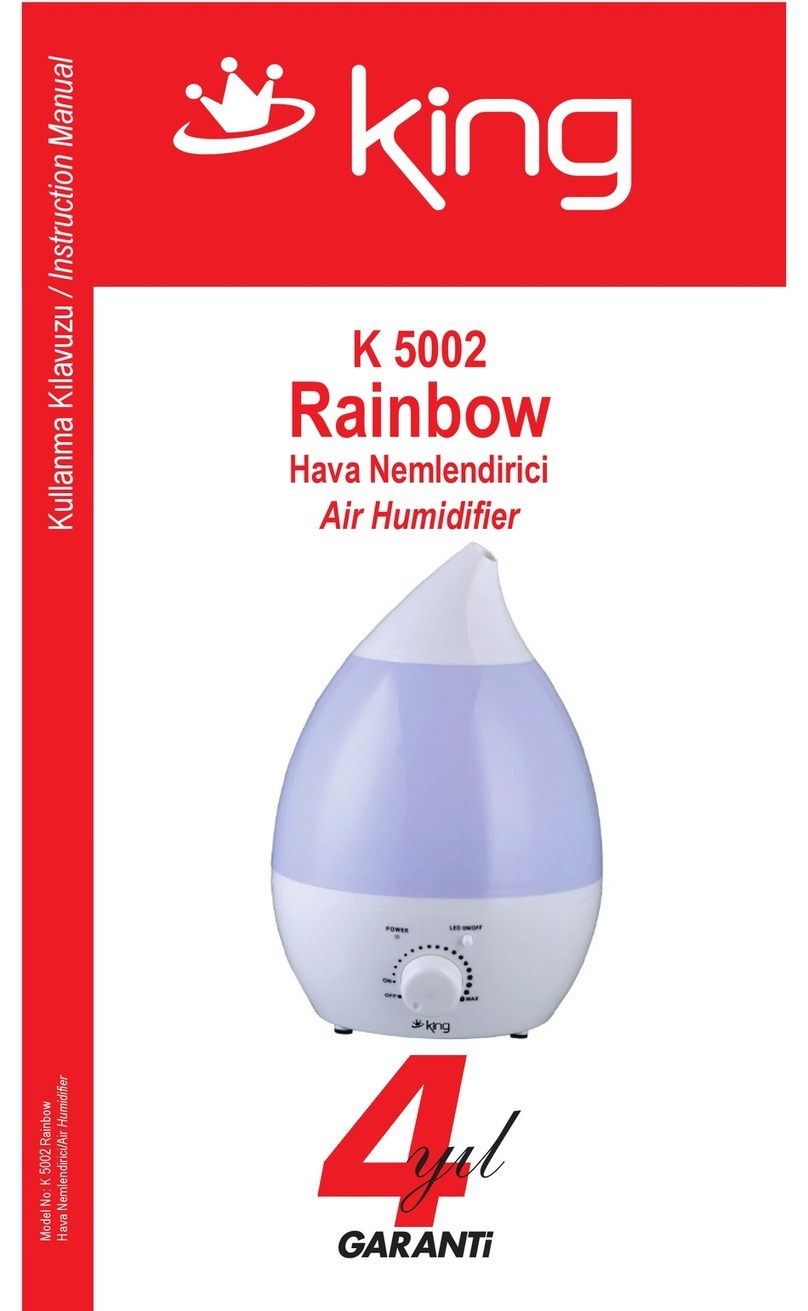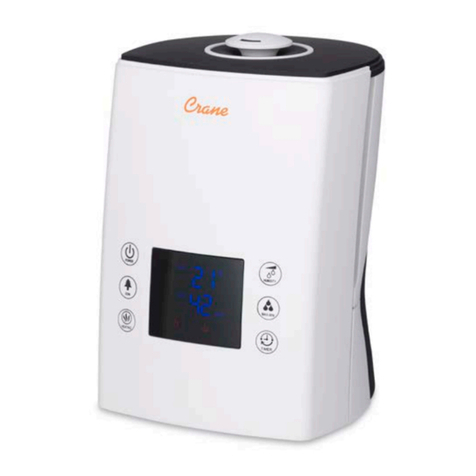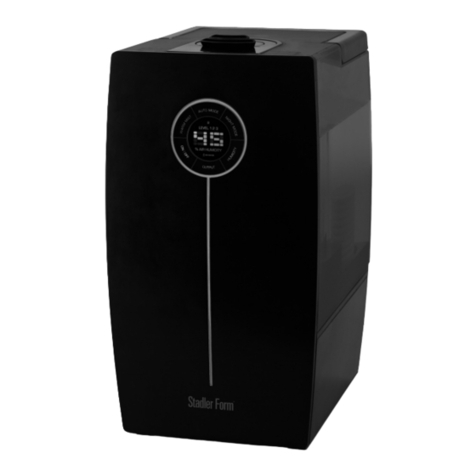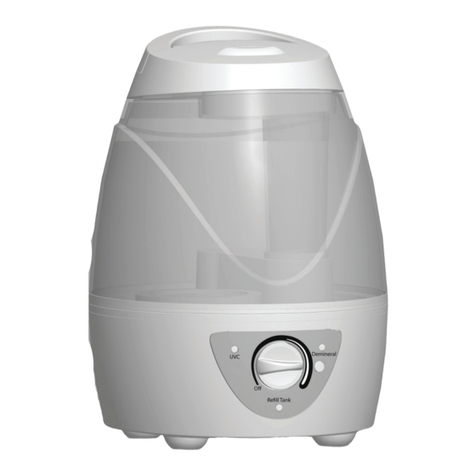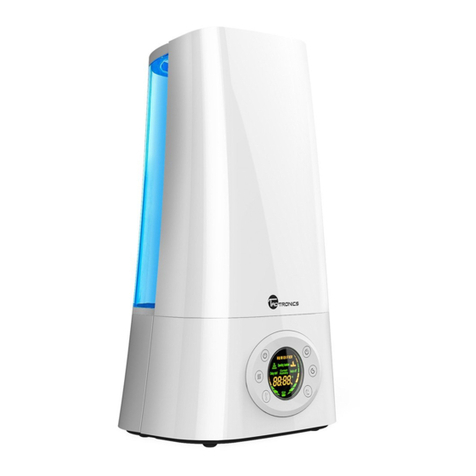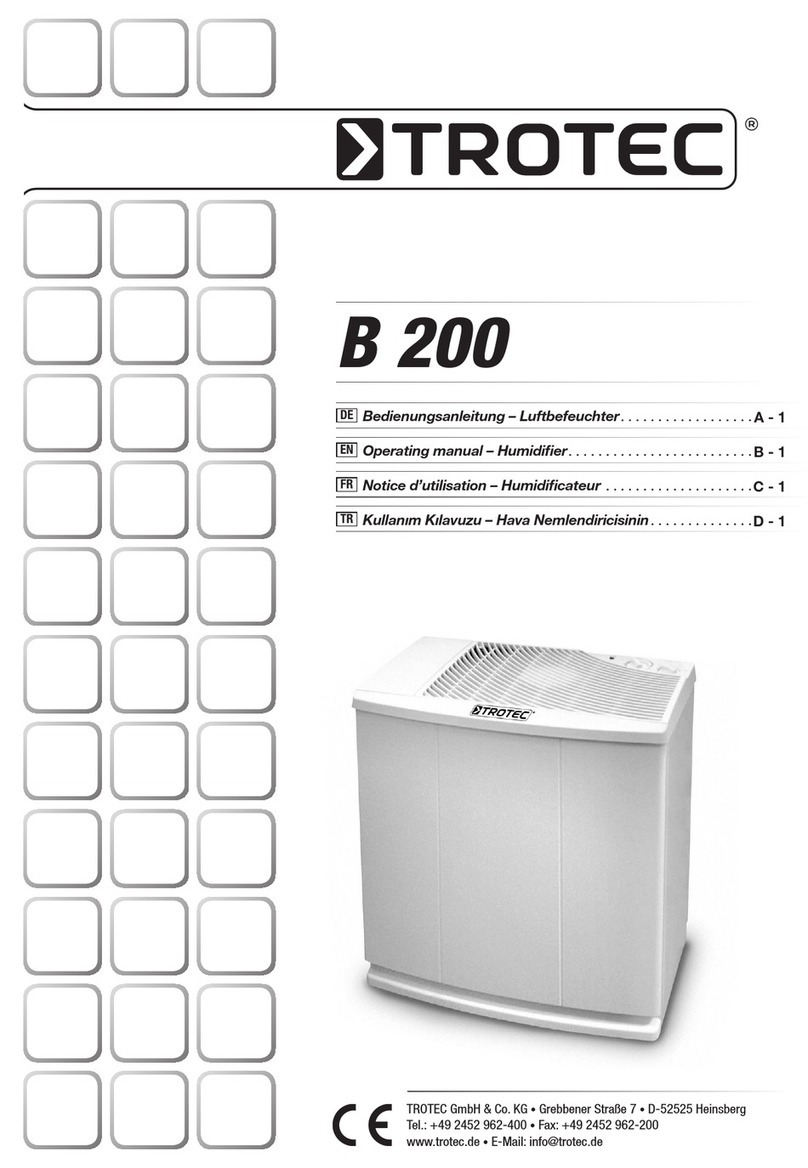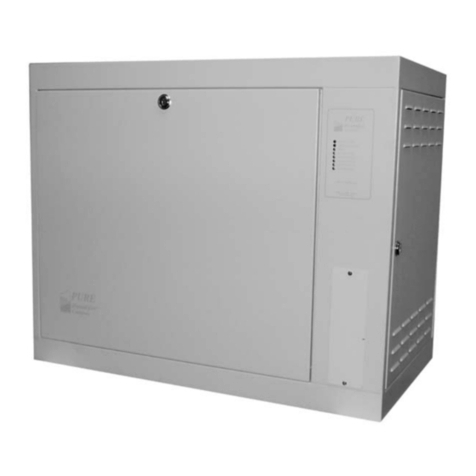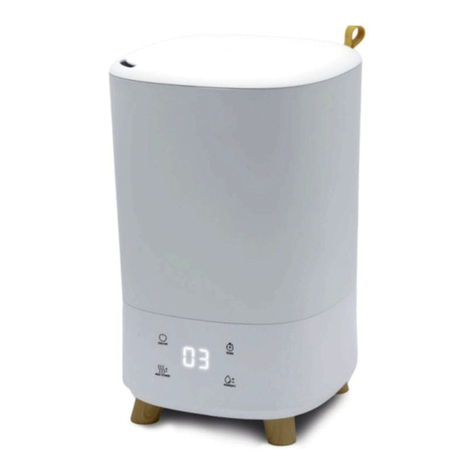
8For Your Safety Condair GSxxxxxxx_A_EN_1905_Condair-GS_OM
DANGER!
Risk of re or explosion!
The Condair GS is a gas-red humidier. Improper installation, adjustment, alteration, ser-
vice, maintenance or use can cause carbon monoxide poisoning, explosion, re or other
hazards that can cause serious injury, death or property damage.
If over-heating occurs or if the gas fails to shut o: Shut o the gas supply at the manual gas
shuto valve before shutting o the electrical power supply.
DO NOT spray aerosols in the vicinity of this appliance while it is in operation.
DO NOT place articles on or against this appliance.
DO NOT use or store ammable materials in or near this appliance.
DO NOT use this appliance if any part has been under water. Call a qualied service techni-
cian immediately to inspect and replace any part of the control system or gas control that has been
under water.
Any work on the gas system must only be performed by a qualied installer, service agency or
your local gas supplier. Use only factory-authorized and listed kits or accessories when installing or
modifying this appliance.
DO NOT store or use gasoline or other ammable vapours and liquids in the vicinity of the humidi-
er or any other appliance.
What to do if You Smell Gas:
DO NOT try to light any appliance.
DO NOT touch any electrical switch.
DO NOT use any phone in the building.
Leave the building immediately.
Call your gas supplier immediately from a location far away from the building with the gas leak.
Follow the gas supplier's instructions.
If you cannot reach your gas supplier, call the re department.
WARNING!
Risk of severe burns from contact with hot surfaces, steam or hot water!
The tank may contain steam or hot water at up to 100 °C . Contact with the hot surfaces,
steam vapours or hot water can result in severe burns.
Prevention:Always drain the tank, and allow the unit to cool down to a safe temperature before
cleaning the tank. Never open the tank until it has been fully drained. Never use the manual drain
valve until the unit has cooled down. Use the manual drain valve to verify that the tank is empty
before removing the tank cover.
WARNING!
Risk of severe burns from contact with hot steam vapours!
The Condair GS humidier produces hot steam vapours for humidication. Bare skin in contact with
hot steam vapours can result in severe burns.
Prevention: Never perform any work on the steam system (including the steam lines, steam dis-
tributors, etc.) while the humidier is operating. Shut down the Condair GS steam humidier, as
described in "Shutting Down" on page 45 before xing any leaks in the steam system.

